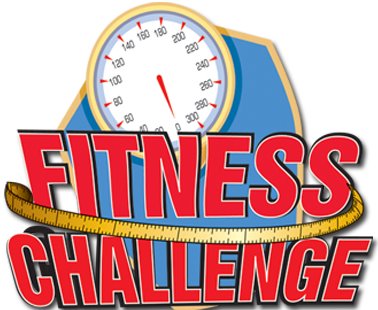Why That Online Fitness Challenge Might Not Be A Good Idea

You probably made a good decision and let me tell you why…
Challenges are great. When they are designed correctly. We have a weight loss and fitness challenge at Wilmington Lady Fitness and I am very proud of the positive long term behavior changes we see as a result. Challenges are fun. They increase awareness and open the doors to education by teaching people important exercises and making them more health conscious.
But not all challenges are created equal and some challenges can be counterproductive to your health goals. I’m not a fan of exercise specific physical challenges. I believe they pose some risks that just aren't worth the benefit for the average individual.
Challenges encourage numbers and not technique. As a professional fitness leader I can tell you that when we coach and cue an exercise we are looking for muscle fatigue and only pushing the muscle to the point of fatigue and perhaps just a smidgen beyond it.
Fatigue is an important thing to understand and recognize when you are doing weight and resistance based exercise. Once your musculoskeletal system fatigues out, your nervous system follows and when fatigue takes over your form suffers as a result. You can’t hold your original position any longer so you have to move and compromised some where in your body to allow you to keep going. You’re able to continue what you are doing, but you are doing it with improper form now.
Basically, whatever bio-mechanical change you just made to allow you to keep preforming that exercise is being encouraged and strengthened by continuing to preform this misaligned movement. We've hit a point of demolishing return. Preforming more of the exercise is no longer beneficial because it decreases form and technique hence, proper body bio-mechanics.
Let’s talk about why we exercise for a moment…
We exercise in order to increase our physical endurance, to allow us to preform daily tasks without experience fatigue and discomfort. We exercise so that when we have time off, we’re able to do the things that we want to do. We exercise so that if an emergency happens, we’re physically capable of dealing with it. We exercise to increase our general health.
So what you have to ask yourself is, does my lifestyle require this type of long duration long repetitions of this particular exercise?
If you have a situation where it does, then the challenge your are considering might be a great additive to your fitness routine. If not, then you would likely benefit more from an exercise routine that did accentuate your lifestyle and goals and not propose the risk of damaging your form, technique and proper body bio-mechanics.
Let’s use the recent 30 day squat challenge as an example for a moment.

Let’s try something. Stand up for a minute and let’s try and do a squat.

- Place your feet just a over shoulder width apart.
- Make sure your toes are facing out just slightly.
- Now stand up straight, pull your shoulders back, push your chest forward. This is easily achieved by putting your hands on the back of your head and pulling your elbows back.
- Tilt your hips so that the top of your booty rolls upwards towards your back.
- Keep your back in a neutral position and keep your knees over the center of your feet.
- Take a deep breath and then exhale as you slowly bend your knees, hips and ankles lowering your body as much as you can and trying to achieve a 90 degree angle.
- Keeping your weight balanced on your heels and pushing from the heel in an upward thrust, lift your body at the same pace that you lowered it and return to your start position.
Alright you just did one squat. Are you SURE you did it correctly? If you are, are you sure you could do it correctly twelve times? Twenty five times? Fifty? One Hundred? Are you positive that you do the squat so well there is absolutely no need at all for any modifications?
Your body mechanics in doing a squat largely determines how a coach modifies an exercise for you. With someone who doesn't have a lot of experience with squats I might start using a stability ball, bench or chair. This will help build some minimal leg strength. For others I might using a squat assist machine to help them learn the proper form. For more advanced squatters I might put weights in their hands or add a compound movement with their squats like bicep curls or front raises.
I would never throw a client into the number of repetitions that a challenge like the 30 day squat challenges suggests. I usually start with one to two sets of eight to twelve repetitions and then, based on each clients performance and how quickly their body adapts to the exercise and how quickly their form and technique improves, begin to progress the exercise to their needs.
Go back and follow the directions for the correctly preformed squat again. Now consider all the modifications that I just described might be needed with different clients and different fitness levels and ask yourself is your squat is so perfect that it needs no modification and if your form and endurance is so good that you can confidently do fifty squats on your first day. Because if you can’t do fifty squats perfectly on day one why would you even considering progressing to more the next day?
I had a couple of clients a few months ago that performed two hundred and fifty stability ball assisted wall squats with correct form over the course of our workout. They were done in sets of twenty-four squats at a time and spaced out throughout our forty give minute workout. That’s not a feat I would throw at someone that hadn't been training with me for quite sometime or someone that only had a couple of weeks experience at doing the exercise. One of them had been working with me for seven months and the other for about five.
Let me tell you one of the general and most fundamental rules of strength training exercise…
Never work the same muscle group two days in a row. When we build muscle we stress muscle. So when we exercise to the point of muscle fatigue we created little microfiber tears in our muscles. When they heal, they heal bigger and stronger. But they need rest to heal. You can’t just tear them day in and day out.
Avid exercisers and those that have experience with strength training will tell you that if you workout five to seven days a week you do it on an exercise program that targets different muscle groups each day. If you are working out three to four times a week you’re usually performing a total body workout each day or following a pattern of upper body, lower body, total body, core.
You’ll get much better physical and weight loss oriented success if you do four sets of twelve repetitions of the version of the squat that you can physically maintain proper form and technique on and then move on to increasing your skill in a different exercise that uses the same muscle group differently like a lunge. If you are working out at home and want to add a little cardio, throw some modified jumping jacks or some jump rope in between the sets to get your heart rate up and burn extra calories during your workout.
The big questions you should be asking yourself before you take on a new fitness routines are…
- Does it help me achieve a personal goal I am working on?
- Will it help improve some aspect of my lifestyle?
- Does it follow the basic rules of strength and resistance ( or cardiovascular ) training?
- Is it something that I can maintain? Is it realistic to my fitness level?
- Is it safe and do the benefits outweigh the risks involved?
- Is it going to be fun?
If any of your answers are no, you might want to reconsider the change you are about to make and consult with a fitness professional to get assistance developing an exercise routine that will better suit your needs.
When clients ask me if I think they should do a 30 day squat challenge or a plank a day challenge I tell them that unless their goal is to finish a physical challenge that proposes higher risk of injury than necessary to achieve results, encourages improper form and technique, and is over in thirty days leaving them to figure out what part of their body they are going to over-train next, a total body work out plan would probably be a much better option.
I did a 30 day burpee challenge once at the request of a family member that was asking for moral support and participation. The only thing it did was make me grown at the mention of burpees for years to come.
All very good points.
But why use a photo like the one above that does not show proper squat form?
In that photo those knees are bent at noticeably more than 90 degrees. That photo should be titled: How to Mess Your Self Up."
I'm going to take the blame for the photo! Pandora sent me another photo but I couldn't get it to load and used another random one I found online. I've updated the pic and hope it's the perfect squat stance :-)
Alex,
I was taught not to bend my knees more than 90 degrees when doing squats to avoid knee injuries. As we age (and since most of us long-obese folks now have osteoarthritis in our knees) bending our knees any more than 90 degrees invites big trouble.
That photo above still looks (to my eye, at least) like the knee is bent about 80 degrees.
The author will surely want to select a photo that illustrates her own view about the proper squat form.




VSGAnn2014 12,992
Posted
All very good points.
But why use a photo like the one above that does not show proper squat form?
In that photo those knees are bent at noticeably more than 90 degrees. That photo should be titled: How to Mess Your Self Up."
Share this comment
Link to comment
Share on other sites